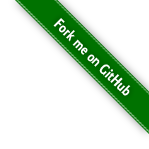#754 NLB Lionsforge Craftlaser
Using the laser cutting services available in Singapore’s National Libraries - Lionsforge Craftlaser.

Notes
Last year I accidentally discovered that Singapore’s library service - the National Library Board (NLB) - has been running “MakeIt” centres in their libraries where a range of tools are available to citizens to use (including 3D printers, laster cutters, digital cutters, and sewing machines). This is an amazing service. They don’t (yet) have 3D resin printers, but these tools make rapid prototyping readily available to all residents at no cost.
For most of these services, they do require users to first complete a free starter course. These help make sure you can keep yourself safe, and save the machines from damage.
I’ve completed the training for the laser cutting facilities, so I can now book and use the devices available at currently 4 of the libraries (Jurong, Punggol, Tampines, Woodlands).
Note: as of July 2025, the Lionsforge Craftlaser units have been replaced by the xTool S1.
About the Lionsforge Craftlaser
The library provides Lionsforge Craftlaser devices. See the Craftlaser-Product-Info-New-Dec21.pdf. Note: laptops are provided all the required software pre-installed.
Workflow
The starter training introduced the basic process:
- using TinkerCAD to make a 3D model
- export to SVG
- When importing from other programs to Inkscape, set DPI to 96 in your original SVG to avoid scaling issues (Inkscape 0.92 and later use 96 DPI).
- use Inkscape as the laser G-code generating tool, but can also be used to edit objects.
- Document properties: set drawing size to A3 Landscape to fit the dimensions of the laser cutter
- import SVG file
- object may appear invisible, because the lines are too fine
- Select “Object > Fill and stroke” to adjust the stroke
- select stroke paint
- set flat color e.g. black
- set stroke style width to 1px
- Select “Object > Fill and stroke” to adjust the stroke
- position object in the desired page location. by default x=5mm, y=5mm (bottom left, just offset from the border)
- add text to the object (this will be treated as an engraving)
- export to CNC G-code for engraving
- use the “305 Engineering > Raster 2 Laser GCode generator” extension
- resolution: at least 10px/mm
- engraving speed: 4000
- export to CNC G-code for cutting:
- ungroup and remove text (engraving elements) from your object
- with object selected, choose “Object to Path”
- use the “Generate Laser G-code > J Tech PhotonicsLaser Tool..” extension. Settings:
- Laser ON Command: M03
- Laser OFF Command: M05
- Travel speed (mm/min): 3000
- Laser speed (mm/min): 300
- Laser power S#: 100
- Power on delay: 0.0
- Passes: 1
- Pass Depth: 1.0
- save the engraving and cutting codes to an SD card
Note: allow for the cutting path in a design:
Every cutting tool creates a cutting pathway, called a kerf. The width of the kerf of a laser cutter is typically 0.2mm. We can incorporate this into our designs to get very accurate parts.
Operating the Cutter:
- Setup
- Make sure the fume extractor is turned on before using the laser cutter
- Adjust Focus Height to 4mm above material
- Open the material loading tray when the display reads “Idle”
- Align your material to the bottom-left corner of the materials tray. Tape down.
- Engraving Phase:
- For engraving, adjust the laser intensity knob to 2/9 power
- Set “Speed mul.” to 200%
- load the engraving file and execute
- Cutting Phase:
- For cutting, adjust the laser intensity knob to 2/3 power
- Set “Speed mul.” to 130%
- load the cutting file and execute
- Once you are done cutting, remember to reset the laser intensity knob back to the 0 position.
G-code files can be previewed/validated with https://ncviewer.com/.
My Sample Project
The starter course has everyone design and cut a simple name tag. My project sources:
- keychain-initial.svg - export from TinkerCAD
- keychain-final.svg - inkscape project
- Engraving code: E_pg_kc_0001_BWfix_128_gcode.txt
- Cutting code: C_pg_kc_0001
Laser Cutting Design Sources
- https://www.ponoko.com/free-laser-cutting-files-templates
- https://designbundles.net/free-design-resources/free-laser-cutting-files
- https://www.creativefabrica.com/subscriptions/graphics/laser-cut-files/
- https://www.designfind.com/
- https://www.vecteezy.com/
- https://crafthousesvg.com/
- https://www.printablecuttablecreatables.com/
- https://makerflocrafts.com/blogs/craft-library/free-laser-engraving-cutting-files - listing
